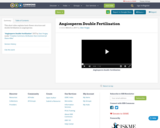
This short video explains basic flower structure and double fertilization in angiosperms.
- Subject:
- Life Science
- Material Type:
- Diagram/Illustration
- Date Added:
- 03/02/2017

This short video explains basic flower structure and double fertilization in angiosperms.
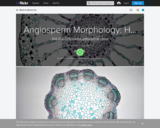
BCC Bioscience Image Library is a media file repository of images and video clips made available to educators and students in the biological sciences. The resources are created by faculty, staff and students of Berkshire Community College and are licensed under Creative Commons 0. This means all content is free, with no restrictions on how the material may be used, reused, adapted or modified for any purposes, without restriction under copyright or database law.
This project was partially funded by a $20,000,000 grant awarded by the U.S. Department of Labor’s Employment and Training Administration, Grant # TC-26450-14-60-A-25. The product was created by the grantee and does not necessarily reflect the official position of the U.S. Department of Labor. The U.S. Department of Labor makes no guarantees, warranties, or assurances of any kind, express or implied, with respect to such information, including any information on linked sites and including, but not limited to, accuracy of the information or its completeness, timeliness, usefulness, adequacy, continued availability, or ownership.
If you have any questions contact professor Faye Reynolds at: freynold@berkshirecc.edu
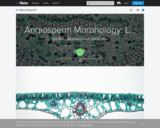
BCC Bioscience Image Library is a media file repository of images and video clips made available to educators and students in the biological sciences. The resources are created by faculty, staff and students of Berkshire Community College and are licensed under Creative Commons 0. This means all content is free, with no restrictions on how the material may be used, reused, adapted or modified for any purposes, without restriction under copyright or database law.
This project was partially funded by a $20,000,000 grant awarded by the U.S. Department of Labor’s Employment and Training Administration, Grant # TC-26450-14-60-A-25. The product was created by the grantee and does not necessarily reflect the official position of the U.S. Department of Labor. The U.S. Department of Labor makes no guarantees, warranties, or assurances of any kind, express or implied, with respect to such information, including any information on linked sites and including, but not limited to, accuracy of the information or its completeness, timeliness, usefulness, adequacy, continued availability, or ownership.
If you have any questions contact professor Faye Reynolds at: freynold@berkshirecc.edu
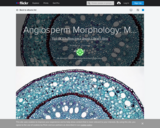
BCC Bioscience Image Library is a media file repository of images and video clips made available to educators and students in the biological sciences. The resources are created by faculty, staff and students of Berkshire Community College and are licensed under Creative Commons 0. This means all content is free, with no restrictions on how the material may be used, reused, adapted or modified for any purposes, without restriction under copyright or database law.
This project was partially funded by a $20,000,000 grant awarded by the U.S. Department of Labor’s Employment and Training Administration, Grant # TC-26450-14-60-A-25. The product was created by the grantee and does not necessarily reflect the official position of the U.S. Department of Labor. The U.S. Department of Labor makes no guarantees, warranties, or assurances of any kind, express or implied, with respect to such information, including any information on linked sites and including, but not limited to, accuracy of the information or its completeness, timeliness, usefulness, adequacy, continued availability, or ownership.
If you have any questions contact Professor Faye Reynolds at: freynold@berkshirecc.edu
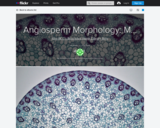
BCC Bioscience Image Library is a media file repository of images and video clips made available to educators and students in the biological sciences. The resources are created by faculty, staff and students of Berkshire Community College and are licensed under Creative Commons 0. This means all content is free, with no restrictions on how the material may be used, reused, adapted or modified for any purposes, without restriction under copyright or database law.
This project was partially funded by a $20,000,000 grant awarded by the U.S. Department of Labor’s Employment and Training Administration, Grant # TC-26450-14-60-A-25. The product was created by the grantee and does not necessarily reflect the official position of the U.S. Department of Labor. The U.S. Department of Labor makes no guarantees, warranties, or assurances of any kind, express or implied, with respect to such information, including any information on linked sites and including, but not limited to, accuracy of the information or its completeness, timeliness, usefulness, adequacy, continued availability, or ownership.
If you have any questions contact professor Faye Reynolds at: freynold@berkshirecc.edu
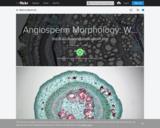
BCC Bioscience Image Library is a media file repository of images and video clips made available to educators and students in the biological sciences. The resources are created by faculty, staff and students of Berkshire Community College and are licensed under Creative Commons 0. This means all content is free, with no restrictions on how the material may be used, reused, adapted or modified for any purposes, without restriction under copyright or database law.
This project was partially funded by a $20,000,000 grant awarded by the U.S. Department of Labor’s Employment and Training Administration, Grant # TC-26450-14-60-A-25. The product was created by the grantee and does not necessarily reflect the official position of the U.S. Department of Labor. The U.S. Department of Labor makes no guarantees, warranties, or assurances of any kind, express or implied, with respect to such information, including any information on linked sites and including, but not limited to, accuracy of the information or its completeness, timeliness, usefulness, adequacy, continued availability, or ownership.
If you have any questions contact professor Faye Reynolds at: freynold@berkshirecc.edu
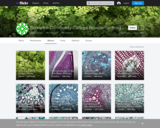
BCC Bioscience Image Library is a media file repository of images and video clips made available to educators and students in the biological sciences. The resources are created by faculty, staff and students of Berkshire Community College and are licensed under Creative Commons 0. This means all content is free, with no restrictions on how the material may be used, reused, adapted or modified for any purposes, without restriction under copyright or database law.
This project was partially funded by a $20,000,000 grant awarded by the U.S. Department of Labor’s Employment and Training Administration, Grant # TC-26450-14-60-A-25. The product was created by the grantee and does not necessarily reflect the official position of the U.S. Department of Labor. The U.S. Department of Labor makes no guarantees, warranties, or assurances of any kind, express or implied, with respect to such information, including any information on linked sites and including, but not limited to, accuracy of the information or its completeness, timeliness, usefulness, adequacy, continued availability, or ownership.
If you have any questions contact professor Faye Reynolds at: freynold@berkshirecc.edu

Biology is designed for multi-semester biology courses for science majors. It is grounded on an evolutionary basis and includes exciting features that highlight careers in the biological sciences and everyday applications of the concepts at hand. To meet the needs of today’s instructors and students, some content has been strategically condensed while maintaining the overall scope and coverage of traditional texts for this course. Instructors can customize the book, adapting it to the approach that works best in their classroom. Biology also includes an innovative art program that incorporates critical thinking and clicker questions to help students understand—and apply—key concepts.

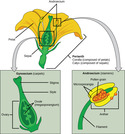
By the end of this section, you will be able to:Explain why angiosperms are the dominant form of plant life in most terrestrial ecosystemsDescribe the main parts of a flower and their purposeDetail the life cycle of an angiospermDiscuss the two main groups of flowering plants
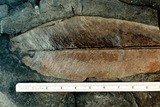
By the end of this section, you will be able to:Explain when seed plants first appeared and when gymnosperms became the dominant plant groupDescribe the two major innovations that allowed seed plants to reproduce in the absence of waterDiscuss the purpose of pollen grains and seedsDescribe the significance of angiosperms bearing both flowers and fruit

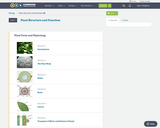


By the end of this section, you will be able to:Describe the two stages of a plant’s lifecycleCompare and contrast male and female gametophytes and explain how they form in angiospermsDescribe the reproductive structures of a plantDescribe the components of a complete flowerDescribe the development of microsporangium and megasporangium in gymnosperms

This resource is a video abstract of a research paper created by Research Square on behalf of its authors. It provides a synopsis that's easy to understand, and can be used to introduce the topics it covers to students, researchers, and the general public. The video's transcript is also provided in full, with a portion provided below for preview:
"Scientists can’t easily peer into the distant past for patterns of evolution. That makes it hard to understand the laws by which species form, transform, and nestle themselves along the tree of life. But studying how species are branched throughout the globe today can provide critical clues. In a recent study, scientists from Japan examined how the diversity of woody plant species varies across continents and across the entire planet. It’s the first study of its kind to find patterns on a global-scale data set. And the findings appear to confirm long-standing hypotheses about the roles of climate and geography in the evolution of life on earth. Climate and geography are important constraints that drive patterns of diversity among different species. They act as evolutionary filters. Harsh climates, for example, can create an ecological bottleneck that keeps certain families of organisms from dispersing into colder habitats..."
The rest of the transcript, along with a link to the research itself, is available on the resource itself.